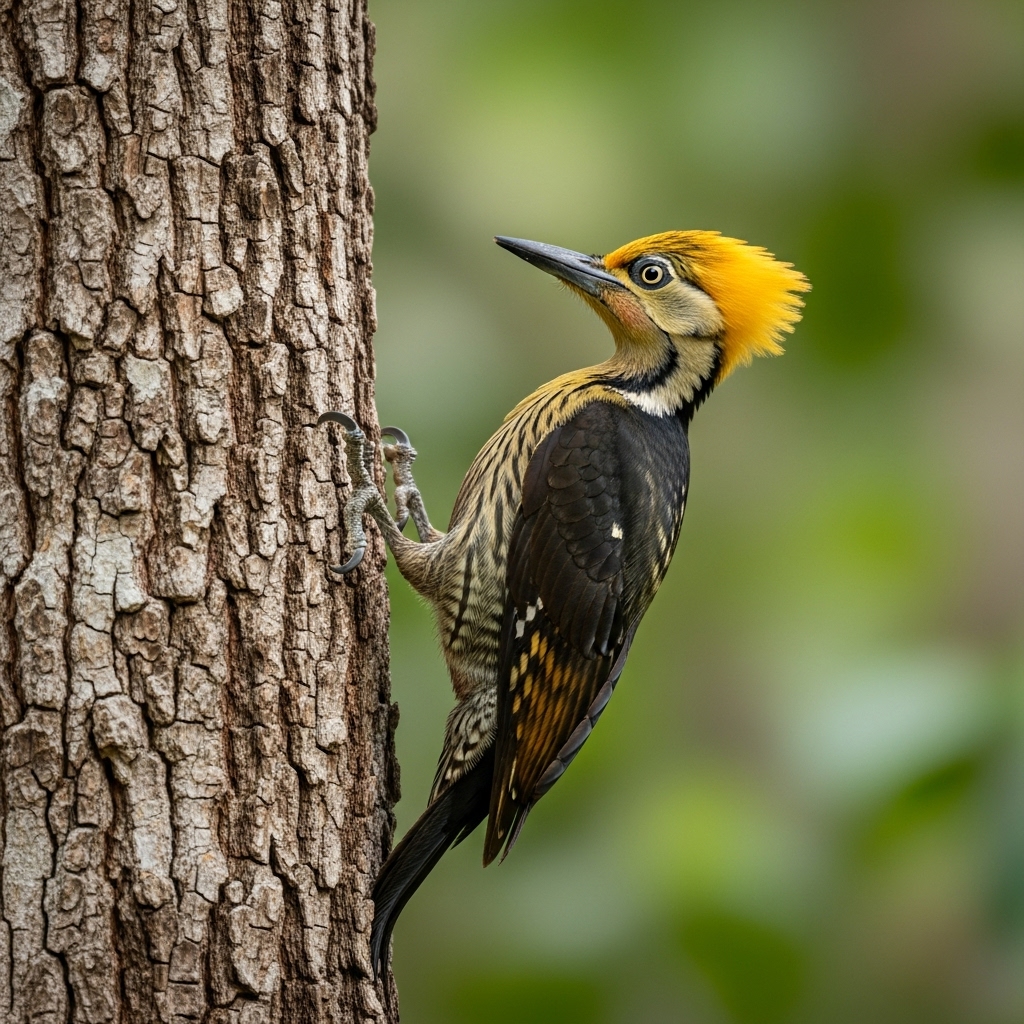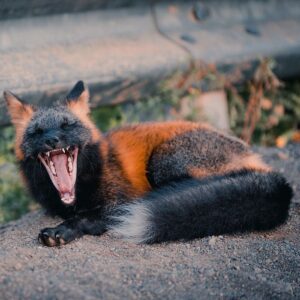Deep in the lush, humid forests of South America, the air is filled with a raucous, “laughing” call that cascades from the canopy. Look up, and you might be rewarded with a flash of striking black and a shock of brilliant, pale-yellow.
This is the Blond-crested Woodpecker (Celeus flavescens), a bird that perfectly embodies the vibrant and wild beauty of the tropics. It’s not just another woodpecker; it’s a feathered punk rocker, a charismatic forest-dweller, and a true tropical gem.
Here’s why this stunning bird is a favorite among birdwatchers and a symbol of South America’s rich biodiversity.
1. The Striking “Blond Crest”
The name says it all. The first thing you’ll notice is its magnificent crest, which is not just blond, but a shaggy, brilliant, creamy-yellow crown that often flops forward over its bill. This crest gives it an unmistakable punk-rock vibe, full of character and attitude.
This bright “blond” head contrasts dramatically with the rest of its body, which is typically a deep black or dark brown, often patterned with bold white bars or spots, especially on the wings.
To add even more flair, the male sports a bright red “mustache” stripe (malar stripe) on his cheek, making him instantly distinguishable from the plainer-faced female.
2. A Loud, Laughing Voice
This bird is heard long before it’s seen. The Blond-crested Woodpecker is not a subtle creature; it’s loud and proud.
It doesn’t have the typical “drumming” you might associate with other woodpeckers (though it is capable of it). Instead, its signature sound is a loud, ringing, and often descending “laugh.” This cackling call, often a “KEE-KEE-KEE-kew-kew,” rings through the forest and is one of the most evocative sounds of the South American wilderness.

3. The Ant Specialist
While most woodpeckers are famous for drilling into hard wood for grubs, the Blond-crested Woodpecker has a more specialized—and softer—target: ants.
It’s a dedicated ant-eater (myrmecivore). Using its strong, pointed bill, it rips into the papery, hard-carton nests of tree ants (especially Crematogaster ants) and arboreal termites. It will spend long periods clinging to a nest, tearing it apart to get at the insects and larvae inside.
This specialized diet makes it a common sight in the mid-levels of the forest, rather than just on the main trunks of the largest trees.
4. A South American Native
This is a true tropical beauty, and you’ll only find it in South America. It’s a resident of the Atlantic Forest, one of the most biodiverse (and threatened) ecoregions on the planet.
You can find the Blond-crested Woodpecker in:
- Eastern Brazil
- Eastern Paraguay
- Northeastern Argentina
It thrives in a variety of wooded habitats, from humid lowland forests and forest edges to secondary-growth woodlands and even subtropical savannas (like the Cerrado), as long as there are trees and, more importantly, ants.
Quick Facts: The Blond-crested Beauty
- Scientific Name: Celeus flavescens
- Size: A medium-sized woodpecker, around 10-11 inches (25-28 cm) long.
- Diet: Primarily ants and termites, but will also eat fruit and seeds.
- Habitat: Forests and woodlands of eastern South America.
- Key Feature: A shaggy, bright blond-yellow crest that contrasts with a dark, barred body.
5. An Ecosystem Engineer
Like all woodpeckers, this bird plays a vital role in the health of the forest.
- Pest Control: By keeping ant and termite populations in check, it helps maintain a healthy balance in the ecosystem.
- Home Builder: It excavates its own nest cavity, usually in a softer, dead tree. After the woodpecker family is done, these abandoned cavities become crucial homes for countless other forest creatures, from other birds (like trogons and toucanets) to snakes, lizards, and small mammals.
A Flash of Gold in the Green
The Blond-crested Woodpecker is a perfect symbol of the tropical forest: it’s bold, it’s loud, and it’s unmistakably beautiful. Seeing that flash of gold against the deep green of the jungle is a true “bucket list” moment, a reminder of the incredible artistry and attitude that nature can produce.
Have you ever been lucky enough to see a Blond-crested Woodpecker? Or is this charismatic bird now on your “must-see” list? Let us know in the comments!


